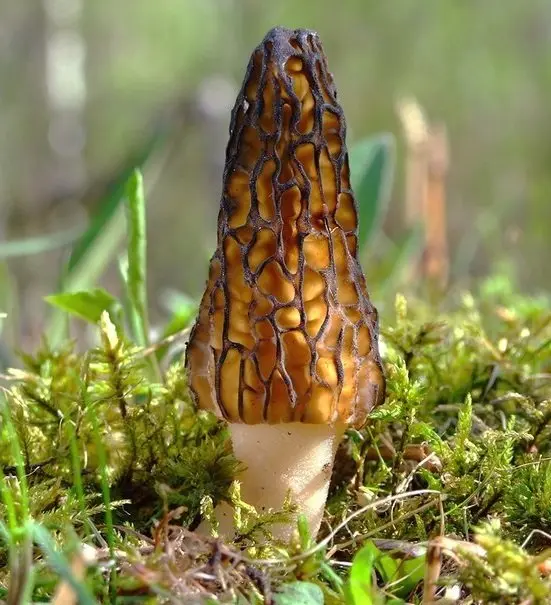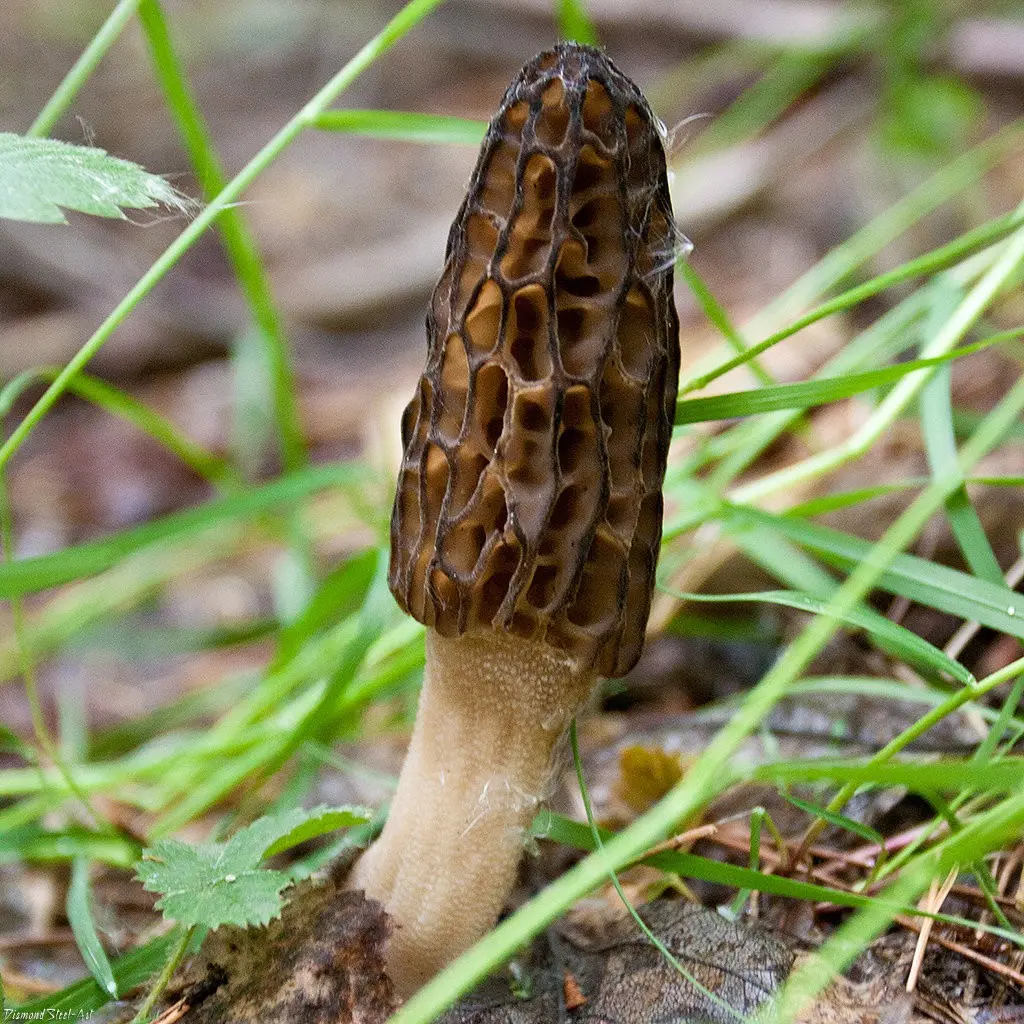Morel high (Morchella elata)
- Department: Ascomycota (Ascomycetes)
- Subdivision: Pezizomycotina (Pezizomycotins)
- Class: Pezizomycetes (Pezizomycetes)
- Subclass: Pezizomycetidae (Pezizomycetes)
- Order: Pezizales (Pezizales)
- Family: Morchellaceae (Morels)
- Genus: Morchella (morel)
- Type: Morchella elata (Tall morel)
- Morchella purpurascens
- Edible mushroom

The high morel is much rarer than other types of morels.
head olive-brown, conical, with cells bounded by sharply prominent ridges of folds, 4-10 cm high and 3-5 cm wide. The surface is covered with roughly triangular cells bounded by more or less parallel vertical narrow folds. The cells are olive-brown, in mature mushrooms they are brown or black-brown; partitions are olive-ocher; The color of the fungus darkens with age.
Leg at the apex almost equal in diameter to the cap, whitish or ocher, granular, 5-15 cm high and 3-4 cm thick, at the apex almost equal in diameter to the cap. In young mushrooms, the stem is whitish, later – yellowish or ocher.
spore powder white, cream or yellowish, spores ellipsoid, (18-25) × (11-15) µm.
The fruit bodies of the high morel develop in April-May (rarely June). Morel high is rare, found in small numbers. Grows on soil in coniferous and deciduous forests, often – on grassy glades and edges, in gardens and orchards. More common in the mountains.

Outwardly, the tall morel is very similar to the conical morel. Differs in a darker color and larger size of the fruiting body (apothecium) (5-15 cm, up to 25-30 cm tall).
Conditionally edible mushroom. It is suitable for food after boiling in boiling salted water for 10-15 minutes (the broth is drained), or after drying without boiling. Dried morels can be used after 30-40 days of storage.









